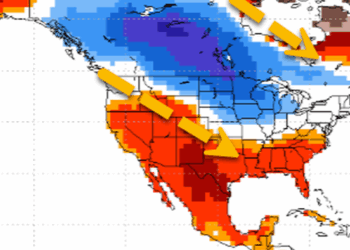
A slice of feminism may not be what you expected with your Thanksgiving dinner, or with your morning-after slice of pie and coffee, which is this particular feminist’s favorite part of the holiday. But if you’re eating that pie as part of a national celebration, you owe it to one of the most influential women of the 19th century—Sarah Josepha Hale.
Chances are, though, you haven’t heard of her, and I don’t think it’s due to the usual “we forget women” explanation—though that’s certainly part of it. I think Hale stays obscure because she refuses to sit neatly in any category, especially in a world that prefers its people—and its history—sorted and labeled. Hale was no radical feminist icon, nor was she a conservative heroine content to stay home and out of public affairs. She was unapologetically ambitious, fiercely domestic, morally didactic, culturally influential, and politically persistent.
Hale was born in 1788, married young, and was widowed at 34. Suddenly a single mother of five, she turned to writing to support her family: You probably know her best for her nursery rhyme “Mary Had a Little Lamb,” and she published her first novel Northwood in 1827 before stepping into magazine editing. Hale was simultaneously sentimental and stubborn: After her husband died, she never remarried and wore black for the rest of her life—not as melodrama, but as an uncompromising declaration that she would live by her pen. And she did. She became a celebrity author and editor, the most famous woman editor, in fact, of the 19th century—“editress,” as Hale herself liked to say.
In 1837, she took the helm of Godey’s Lady’s Book, a position she held for 40 years. Godey’s Lady’s Book wasn’t simply about literature or domesticity: Within the magazine’s pages, you could find fashion plates (full-color engravings that women tore out and saved), housekeeping columns, beauty advice, sewing patterns, child-rearing philosophy, moral essays, recipes, religious tracts, musical compositions, short stories, and serialized novels. It was the guidebook for middle-class American women. Want to know the newest French sleeve style? How to arrange your parlor? What moral habits to encourage in your children? What color ribbons were in vogue for Easter? Hale let you in on all the secrets that were to be had.
By the 1860s, the magazine had 150,000 subscribers. Hale published the biggest names she could get—Harriet Beecher Stowe, Lydia Sigourney, E.D.E.N. Southworth, Nathaniel Hawthorne, even Edgar Allan Poe—while shaping everything from fashion trends to baby names to holiday rituals. Hale was, quite literally, the woman setting the aesthetic tone for American homes. It’s no exaggeration to say she was the closest thing her century had to a celebrity influencer. If Sarah Josepha Hale were around in 2025, she’d be the kind of cultural force who could decide what pie you’re eating this weekend—an influencer whose Thanksgiving menu would go viral. Think a blend of Anna Wintour’s editorial power with a dash of Oprah’s cultural reach. She wasn’t just editing a magazine; she was curating American taste.
But her most ambitious cultural project wasn’t a fashion plate or a serialized novel: It was Thanksgiving itself. Hale grew up in New England, where many towns already celebrated versions of the holiday but the dates floated from year to year and even town to town. And while the region told beloved stories about the Pilgrims’ harvest feast, those traditions were local, patchy, and inconsistent. Hale believed Thanksgiving should belong to everyone—from Massachusetts to California, from South Carolina to Ohio.
Now, it’s worth noting that before Hale, “Thanksgiving” wasn’t Thanksgiving—that is, capital “T,” turkey on the table, football on TV. It wasn’t even a holiday. It truly was an ad hoc religious and social observance, declared by governors or ministers in response to specific events: a successful harvest, the end of drought, a military victory. These one-off “days of thanksgiving” came and went with no shared date, no shared customs, and certainly no pumpkin pie mandate. Hale wanted something different: not a reaction to crisis, but a ritual of gratitude built into the national calendar.
Long before she ever wrote to the White House—which she did repeatedly—she imagined such a holiday in fiction. In that aforementioned 1827 novel Northwood, Hale devoted an entire chapter to a holiday feast, lingering over a table “loaded with every variety of esculent suited to the season,” complete with “the smoking sirloin,” the “chubby turkey,” and pies “of every name and description.”
But Hale wasn’t merely describing food—far from it. She was staging a national ideal. Her novel’s full name was Northwood; Or, Life North and South: Showing the True Character of Both, and the Thanksgiving meal in the story brings Northern hosts and their Southern relatives together at the same table, a symbolic reunion written decades before the Civil War. Hale sets that gathering against the era’s most charged regional divisions: Her narrator contrasts the industrial—and, in her estimation, more “industrious”—North with the plantation South, condemning slavery as a moral evil and describing the two regions as increasingly at odds. Yet the relatives still choose to gather, bringing with them all the simmering tensions of the time. Hale seemed to foresee the fractures forming in the republic, and she believed Americans needed more than political pomp or military victories to hold a nation together; they needed the slow, often difficult work of reconciliation within families and communities. Her novel wrestles with these tensions: relatives who disagree fiercely, who carry regional resentments, and who still choose to gather around the same table.
The Thanksgiving scene reads like a soft political argument: This is what America could be if it gathered as one household. Gratitude, Hale seems to suggest, is how we remember the odd little gifts each person offers—the way one uncle can coax a laugh out of grouchy grandma, the cousin who wanders into a bricklaying anecdote with no discernible ending—even when our convictions clash. And we sigh with relief and joy that we’re with these people once again this year. We missed that joke, that laugh, this meandering story. We missed each other.
For Hale—the woman who provided American housewives with more cooking tips than anyone else in the 19th century—the Thanksgiving table wasn’t primarily culinary. It was communal. And, in her mind, it was constitutional.
So once she became editor of Godey’s, she put that vision into action. Beginning in the 1840s, she launched a decades-long lobbying campaign to make Thanksgiving a national holiday. She wrote to Zachary Taylor, Millard Fillmore, Franklin Pierce, and James Buchanan—none of whom acted. Lesser spirits might have quit after one presidential snub (or four), but Hale was not built for quitting. She kept writing, kept persuading, kept threading Thanksgiving through editorials in her magazine and letters to presidents and other politicians. She had her detractors: Indeed, one Virginia governor dismissed the idea as Yankee “theatrical national claptrap,” calling it “little more than an occasion for indulgence in dissipation at the cost of character.” For Hale, however, Thanksgiving was the opposite of theatrics or public spectacle; it was an inward work rather than an outward show. She trusted that such inward work, work within one’s home, could ripple outward, that the healing of individual hearts might help the healing of a nation.
By the time Lincoln read her letter in September 1863, the country was exhausted. Gettysburg had ended two months earlier with unimaginable casualties. Families were fractured, states were bitterly divided, and the very idea of a United States felt fragile. Hale’s proposal arrived not as a domestic nicety but as a cultural intervention—a way to call a bleeding nation to the same table, if only for a day. In a world where families were split by battle lines, the image of a shared feast—of turkey, pies, and a moment of gratitude—offered unity where politics could not.
In October 1863, Lincoln issued a proclamation establishing a national day of Thanksgiving. Lincoln’s own language echoed Hale’s persuasive vision: He called the nation to give thanks “with one heart and one voice,” inviting citizens in every corner of the Union—including those “at sea” and “sojourning in foreign lands”—to pause together. He urged Americans not only to offer gratitude but also to “commend to [God’s] tender care all those who have become widows, orphans, mourners, or sufferers” in the war, and to implore divine help “to heal the wounds of the nation.” In the middle of brutal civil strife, Lincoln took up Hale’s idea that gratitude to God and for each other could be a form of national repair.
How often do we talk about that at Thanksgiving? Not just the abundance on our plates, but the purpose of the day itself: to give thanks to God, to love each other better, to remember the vulnerable, to soften our own hearts. We tell the Pilgrims’ story every year, but the truth is that while their harvest celebration left us an origin myth, it was the Civil War—and Hale’s decades-long campaign—that re-forged Thanksgiving into the annual ritual of gratitude we know today. A practice we needed then, and perhaps need again.
Before Hale’s triumph, America had only one truly national celebration—the Fourth of July. Long before Congress made it a federal holiday in 1870, Independence Day was marked with parades, cannons, fireworks, and patriotic speeches. It was a holiday created to celebrate what made us free—not what held us together.
Hale wanted something different—not in opposition to the Fourth of July, but in addition to it. She believed the nation needed a day centered not on military victory, but on home, gratitude, and shared belonging. Again, this is why she doesn’t fit neatly into our ideological bins. She championed national unity, yet she believed that domestic life—largely women’s work in the 19th century—could mold a republic just as importantly as more public-facing work. If the Fourth of July taught independence, Hale believed Thanksgiving could teach interdependence: that a nation is sustained not only by the freedoms we fight for, but by the commitments we keep to one another around a shared table.
As America approaches its 250th year, Hale reminds us that nations are forged not only by soldiers and statesmen but by the often unheeded work of writers, editors, teachers, and mothers—people who labor in the realm of culture as deliberately as others labor in the realm of policy. Hale may not be the feminist icon who checks all your boxes (no, she didn’t support suffrage), but she is the reason we’re all eating pie this particular weekend, and the reason we’re all taking a moment to simply pause. In short, Hale reminded a nation that sometimes the most revolutionary act is simply setting a place for each other.

















